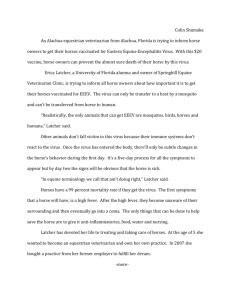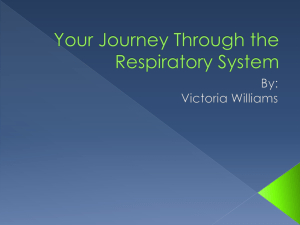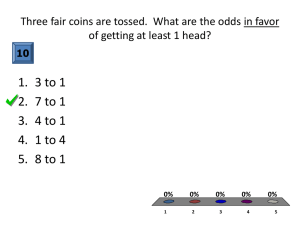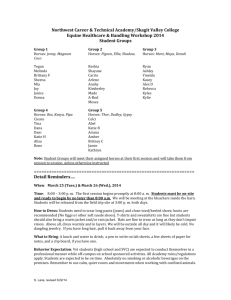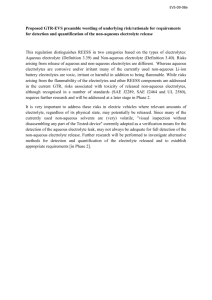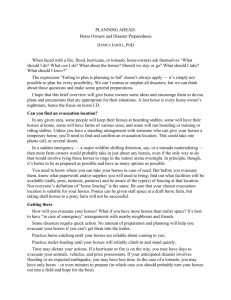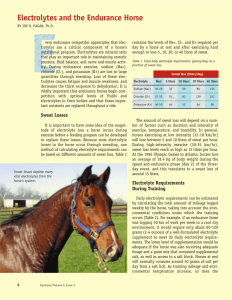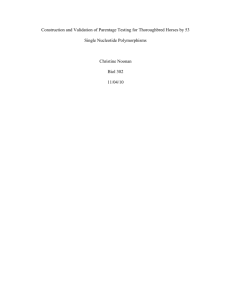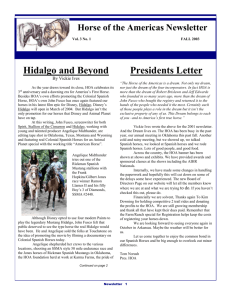Heat Stress & Dehydration in your horse
advertisement
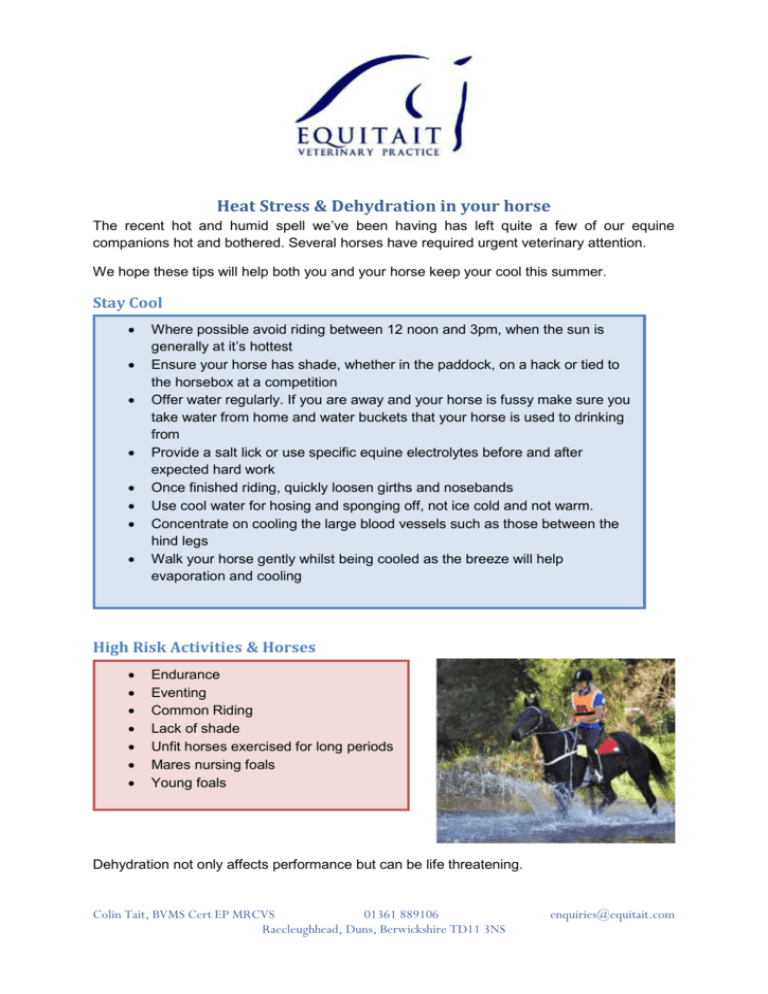
Heat Stress & Dehydration in your horse The recent hot and humid spell we’ve been having has left quite a few of our equine companions hot and bothered. Several horses have required urgent veterinary attention. We hope these tips will help both you and your horse keep your cool this summer. Stay Cool Where possible avoid riding between 12 noon and 3pm, when the sun is generally at it’s hottest Ensure your horse has shade, whether in the paddock, on a hack or tied to the horsebox at a competition Offer water regularly. If you are away and your horse is fussy make sure you take water from home and water buckets that your horse is used to drinking from Provide a salt lick or use specific equine electrolytes before and after expected hard work Once finished riding, quickly loosen girths and nosebands Use cool water for hosing and sponging off, not ice cold and not warm. Concentrate on cooling the large blood vessels such as those between the hind legs Walk your horse gently whilst being cooled as the breeze will help evaporation and cooling High Risk Activities & Horses Endurance Eventing Common Riding Lack of shade Unfit horses exercised for long periods Mares nursing foals Young foals Dehydration not only affects performance but can be life threatening. Colin Tait, BVMS Cert EP MRCVS 01361 889106 Raecleughhead, Duns, Berwickshire TD11 3NS enquiries@equitait.com Signs of Heat Stress: What to look out for Lack of appetite or thirst elevated rectal temperature >38.5°C elevated heart rate persistently elevated respiratory rate, or panting excessive sweating, or an unexpected lack of sweating shortened stride, lack of impulsion, muscle soreness depression, disorientation, glazed look in the eyes scant and very concentrated (dark coloured) urine congested and dark mucous membranes on the gums unsteadiness on feet (ataxia) reduced gut sounds , colic “Thumps" (what appears to be a rhythmic jerking of the abdominal muscles with each breath, almost like violent hiccups) If you see a number of these signs which are not improving, immediately start cooling the horse down and contact your veterinary surgeon. Treatment includes replacement of lost fluids, correcting any electrolyte imbalances, stimulating the guts and bringing the core temperature down to within normal limits. This may involve large volumes of fluid replacement via stomach tube and/or intravenous fluids, blood samples to detect and quantify specific electrolyte imbalances before treating these and anti-inflammatory drugs. Water and Electrolyte Balance Horses GET electrolytes (sodium, chloride & potassium) from their feed Horses LOSE electrolytes through urine, manure and sweat. Excessive sweating leads to depletion of water AND electrolytes. We must ensure that these water and electrolyte losses are replaced. When horses are working lightly in mild conditions they will quickly replenish their lost electrolytes and water by eating and drinking. In more extreme hot and humid weather and when working hard and sweating profusely, we must help this process as the deficit becomes too big for the horse to restore by eating and drinking alone, especially if their appetite and thirst is reduced due to dehydration & heat stress. As a guideline horses trotting and cantering in mild weather for about an hour will generally lose about 5-7 litres of sweat, however in hot and humid weather the same exercise will cause a loss of 10-12 litres of sweat. After heavy sweating monitor your horse's drinking carefully to quantify how much they are replacing. Encourage drinking by flavouring the water and offer frequently. Oral electrolytes can be added to feed or water. Colin Tait, BVMS Cert EP MRCVS 01361 889106 enquiries@equitait.com Raecleughhead, Duns, Berwickshire TD11 3NS






